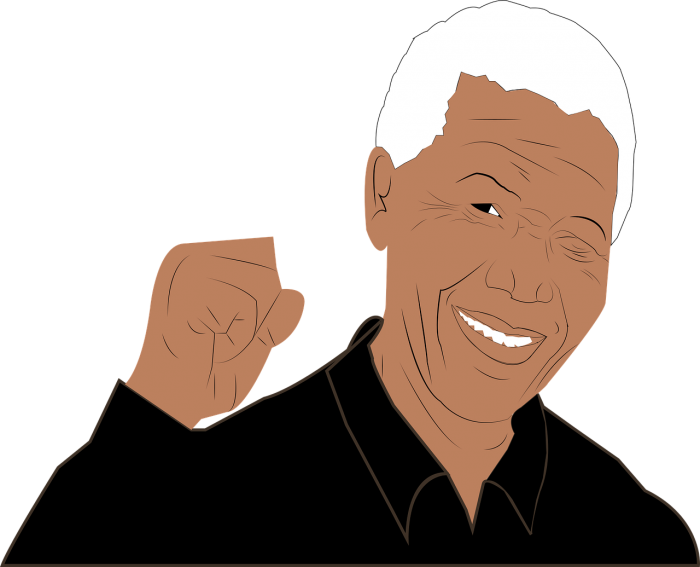In a July 13, 1966 article in Christian Century Magazine, Dr. King affirmed the ultimate goal inherent in the quest for the Beloved Community: “I do not think of political power as an end. Neither do I think of economic power as an end. They are ingredients in the objective that we seek in life. And I think that end of that objective is a truly brotherly society, the creation of the beloved community”
The principle of “none of us are free until all of us are free” requires that I speak up about injustice. It requires that women support women. It requires that men call each other out when they know bad things are going down. It requires that we support black businesses and we see black and brown people participating in outdoor recreation. It requires that we have some courage in our conversations with those who are in our first circle of kinship whether it’s family or class or political persuasion, but
As the difficulties arise and violence increases, can we visit the six principles of non-violent resistance from Dr. Martin Luther King, Jr.?
First, it must be emphasized that nonviolent resistance is not a method for cowards; it does resist. If one uses this method because one is afraid or merely because one lacks the instruments of violence, this person is not truly nonviolent. This is why Gandhi often said that if cowardice is the only alternative to violence, it is better to fight. He made this statement conscious of the fact that there is always another alternative: no individual or group need submit to any wrong, nor need they use violence to right the wrong. There is always the way of nonviolent resistance. This ultimately is the way of the strong person. It is not a method of stagnant passivity. The phrase “passive resistance” often gives the false impression that this is a sort of “do-nothing” method in which the resister quietly and passively accepts evil. But nothing is further from the truth. For while the nonviolent resister is passive in the sense that she is not physically aggressive toward the opponent, her mind and emotions are always active, constantly seeking to persuade the opponent that he is wrong. The method is passive physically, but strongly active spiritually. It is not passive non-resistance to evil, it is active nonviolent resistance to evil.
A second basic fact that characterizes nonviolence is that it does not seek to defeat or humiliate the opponent, but to win his friendship and understanding. The nonviolent resister must often express protest through noncooperation and boycotts, but the resister realizes that these are not ends in themselves; they are merely means to awaken a sense of moral shame in the opponent. The end is redemption and reconciliation. The aftermath of nonviolence is the creation of the beloved community, while the aftermath of violence is tragic bitterness.
A third characteristic of this method is that the attack is directed against forces of evil rather than against persons who happen to be doing the evil. It is evil that the nonviolent resister seeks to defeat, not the persons victimized by evil. If she is opposing racial injustice, the nonviolent resister has the vision to see that the basic tension is not between races. As I like to way to the people in Montgomery: “tension in this city is not between white people and Negro people. The tension is, at bottom, between justice and injustice, between the forces of light and the forces of darkness. And, if there is a victory, it will be a victory not merely for fifty thousand Negroes, but a victory for justice and the forces of light. We are out to defeat injustice and not white persons who may be injust.”
A fourth point that characterizes nonviolent resistance is a willingness to accept suffering without retaliation, to accept blows from the opponent without striking back. “Rivers of blood may have to flow before we gain our freedom, but it must be our blood,” Gandhi said to his countrymen. The nonviolent resister is willing to accept violence if necessary, but never to inflict it. He does not seek to dodge jail. If going to jail is necessary, he enters it “as a bridegroom enters the bride’s chamber.”
One may well ask: “What is the nonviolent resister’s justification for this ordeal to which he invites others, for this mass political application of the ancient doctrine of turning the other cheek?” The answer is found in the realization that unearned suffering is redemptive. Suffering, the nonviolent resister realizes, has tremendous educational and transforming possibilities. “Things of fundamental importance to people are not secured by reason alone, but have to be purchased with their suffering,” said Gandhi. He continues: “Suffering is infinitely more powerful than the law of the jungle for converting the opponent and opening his ears which are otherwise shut to the voice of reason.”
A fifth point concerning nonviolent resistance is that it avoids not only external physical violence but also internal violence of spirit. The nonviolent resister not only refuses to shoot his opponent, but he also refuses to hate him. At the center of nonviolence stands the principle of love. The nonviolent resister would contend that in the struggle for human dignity, the oppressed people of the world must not succumb to the temptation of becoming bitter or indulging in hate campaigns. To retaliate in kind would do nothing but intensify the existence of hate in the universe. Along the way of life, someone must have sense enough and morality enough to cut off the chain of hate. This can only be done by projecting the ethic of love to the center of our lives.
A sixth basic fact about nonviolent resistance is that it is based on the conviction that the universe is on the side of justice. Consequently, the believer in nonviolence has deep faith in the future. This faith is another reason why the nonviolent resister can accept suffering without retaliation. For the resister knows that in the struggle for justice he and she have cosmic companionship. It is true that there are devout believers in nonviolence who find it difficult to believe in a personal God. But even these persons believe in the existence of some creative force that works for universal wholeness. Whether we call it an unconscious process, an impersonal Brahman, or a Personal Being of matchless power and infinite love, there is a creative force in this universe that works to bring the disconnected aspects of reality into a harmonious whole.
(Source: excerpted from Stride Toward Freedom, by Martin Luther King, Jr.)
Disgust, fear, and anger are inspiring Black Lives Matter marchers (sometimes nearly all white) to target quiet residential neighborhoods. To harass people who are in the sanctuary of their homes (no matter what neighborhood) seems to me not only terrifying, but also a violation of what it is we are trying to achieve. Why is it any less wrong for a mob of people to go chanting aggressively through one neighborhood than for a mob of people chanting aggressively to go marching through another?
It is dangerous when our anger becomes general—when the Hebrews hate all Egyptians because of their complicity, when the Jewish people hate all Germans because of their complicity, when Black people will hate all white people because of their complicity.
As a white person, I thought I could see that things were getting better for Black people and I was glad. I didn’t know how much wasn’t getting better.
I, too, have anger and impatience with my race not seeing Black bodies the same way we see our own. It’s a long time coming, and we are slow learners. Thirty years ago, I called up to the boys’ dorm to ask the time by saying “hey boys” to a handful of fellow students. Instead of getting the time of day, I heard one boy yelling, “She called us boys. She called us boys!” He didn’t know I would’ve called any of the male students that no matter their skin color.
White people do need to call out tacit approval of the status quo. However, violation of the sacred space of family is off-limits. If you are going to overturn the tables in the temple as Jesus did, you’d better be as pure of heart. So, you’d better not overturn the tables. For me, I’ll just carry them out.







Read 7 comments and reply